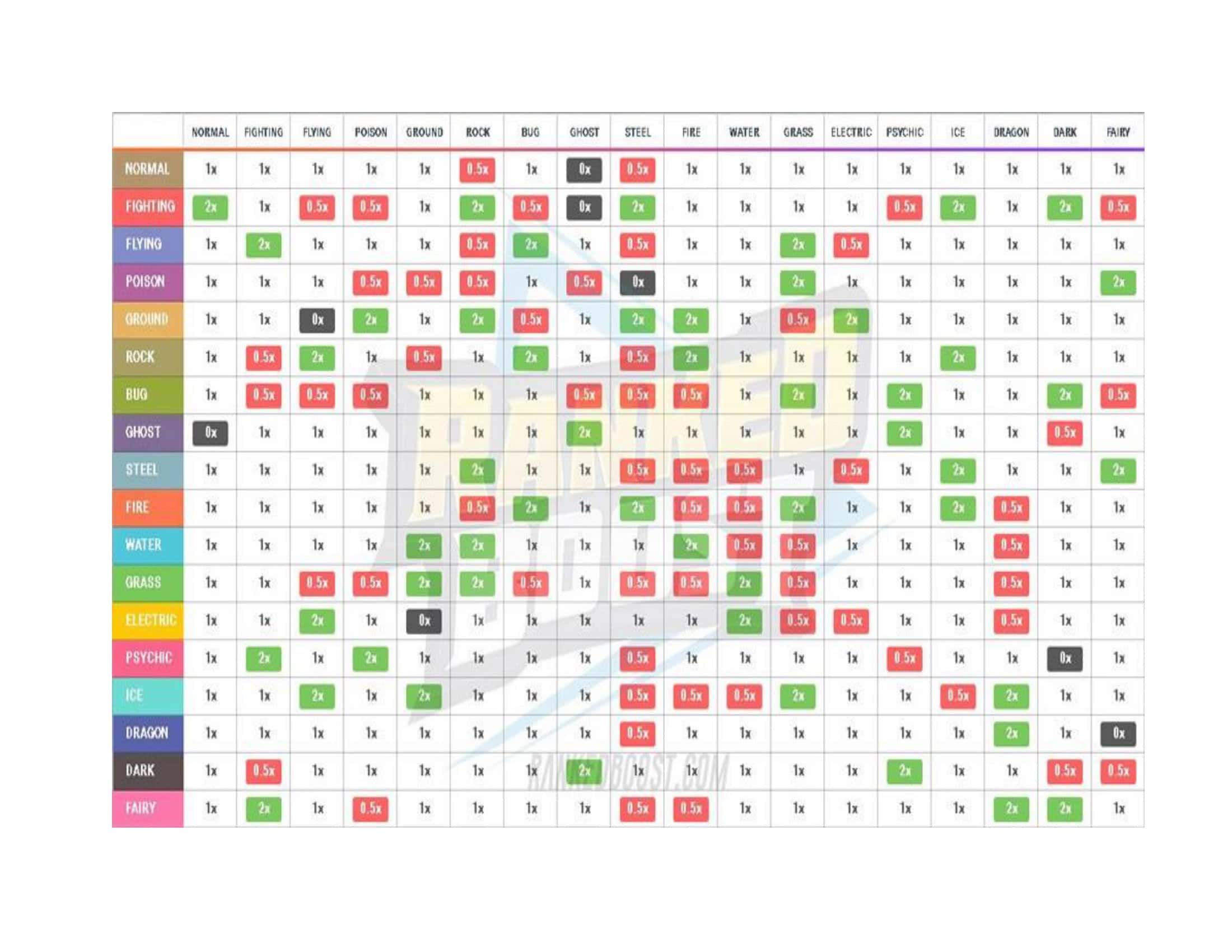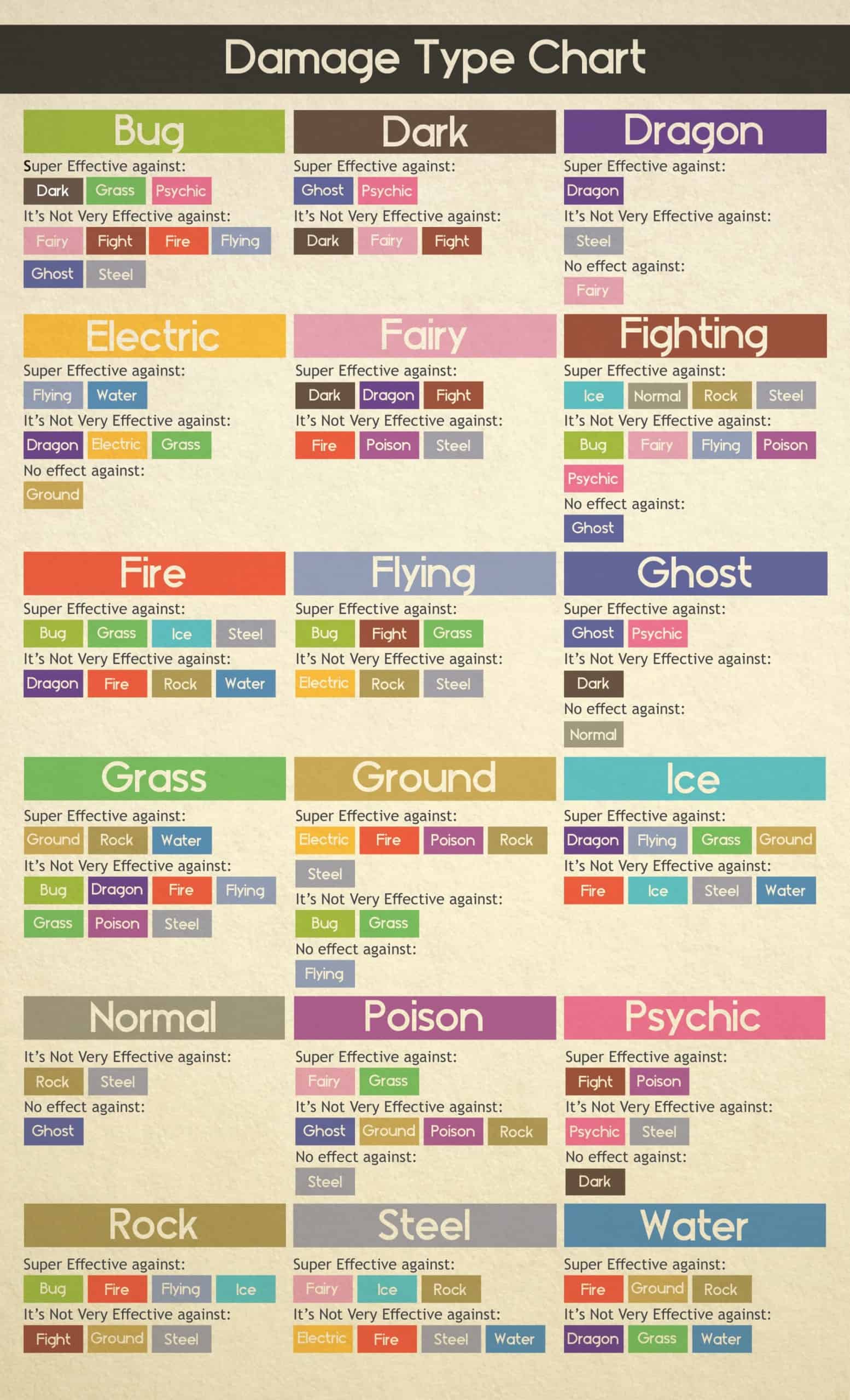Knowing how hard your attack type will hit before you fire a “Thunderbolt” at an opponent’s Pokémon can spell the difference between victory and a wasted turn. To speed that decision, TypeCalendar created 25 high-resolution, color coded Pokémon Type Charts each a single-click PDF download.

Table of Contents
Why You Should Always Keep a Pokémon Type Chart Handy
It is almost impossible to keep in mind the multipliers of ≈20 different types during the battle. A visual chart:
- Resolves damage instantly— see 2×, 0.5×, or 0× at a glance.
- Speeds team building— illuminates missing coverage.
- Eases teaching— new players master type matching faster.
25+ Colorful Pokemon Type Charts [Strengths and Weaknesses]
TypeCalendar’s 25 chart color PDF collection meets every skill level and use case. Inside one folder you’ll find:
• Basic charts with single-type matrices
• Advanced boards that calculate dual-type totals
• Pocket mini-cards for class handouts • Poster-sized graphics readable across a tournament table.
Every file is 300 ppi CMYK. Color blind friendly palettes and high-contrast cells make type interactions pop whether you’re playing or teaching.
Download and Customize with Ease
The philosophy is simple: “select, download, print.” The files are listed one by one, so your folder is not cluttered with unnecessary files as you only download the table you need. Open the PDF in a browser, print in under a minute, laminate, and hang on desk or wall. Need brand colors? Swap spot colors in Acrobat or any free PDF editor. In short, the download and customization process offers maximum flexibility with minimal effort, designed to give you time to plan your strategy.
Practical for Field, Classroom, and Tournament Use
- eSports & VGC: Place a poster-sized chart by the station and spot team weaknesses between rounds.
- School Clubs: Photocopy mini-cards for new members so they master types before their first match.
- Casual Play: Set the basic matrix as your phone wallpaper and stop searching mid match.
Count on Free Updates from TypeCalendar
When new generations arrive, type interactions shift. TypeCalendar sends post-purchase updates to subscribers as additional PDFs for free, so your collection always stays in sync with the meta.
Are you ready?
Choose the chart you need, download it, print it and know in advance whether your next attack will be “It’s super effective!” or “It doesn’t affect…” TypeCalendar’s 25 high-quality Pokémon Type Charts keep your strategy sharp not left to chance.

























![Free Printable Morse Code Charts [Numbers, Alphabet] 1 Morse Code Chart](https://www.typecalendar.com/wp-content/uploads/2023/09/Morse-Code-Chart-150x150.jpg)

![43+ Free Printable 134A PT Charts [Download PDF] 3 134A PT Chart](https://www.typecalendar.com/wp-content/uploads/2023/09/134A-PT-Chart-150x150.jpg)
